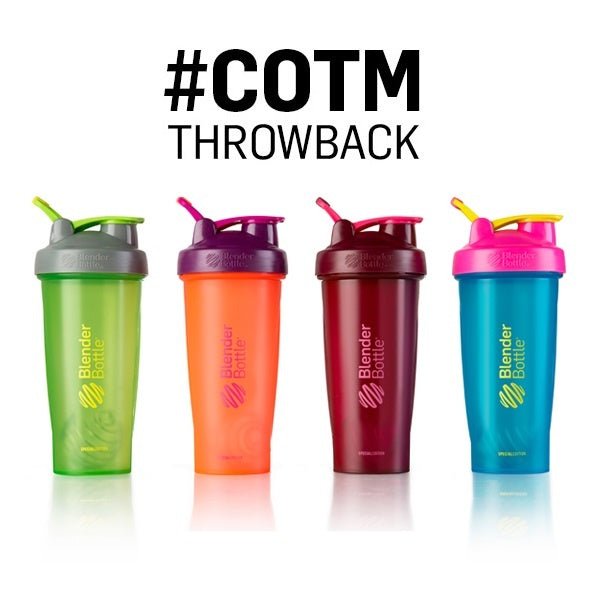Understanding the skinny fat body type and what to do about it.
Surely you know people with the skinny fat body type. Maybe you've seen them in the weight room or at the pool. Maybe you even see one in the mirror.
What Is Skinny Fat?
Skinny fat refers to one's body composition. The skinny fat body type has a disproportionately high amount of body fat in relation to muscle mass. Skinny fat people are not what we traditionally consider fat; in fact, they're average or even underweight. The person who spends endless hours on the treadmill, yet lacks muscle tone, may be skinny fat. The person who looks lean enough in their clothes, but underneath sports a belly pooch and love handles, may be skinny fat.
Being skinny doesn't necessarily equate to good health. In addition to falling short of their optimal tone-and-tighten fitness goals, skinny fat people are often lacking the nutrients their bodies need, and may even have an excess of visceral fat, which can lead to health problems. So if you're reading this and finding the description of the skinny fat body type uncomfortably familiar, it's worth understanding what skinny fat is, and what you can do about it.
Why Am I Skinny Fat?
Having a skinny fat body is usually a result of one or more of the following factors:
- The type of exercise you do. Focusing on long, steady-state cardio without the balance of strength training and high intensity intervals is a classic path to becoming skinny fat. Cardio exercise burns plenty of calories, keeping skinny fat people slim, but it doesn't build sufficient muscle.
- Poor nutrition. Skinny fat people often do not get enough protein and nutrients in their diets. They may restrict their calories in an attempt to lose weight, often severely, especially when they are new to working out. They may also consume an excess of empty-calorie carbs and processed foods, and despite a naturally fast metabolism that keeps them lean whether or not they workout, they lack quality protein, along with other important nutrients.
- Some people are more genetically predisposed to being skinny fat than others, although targeted training and nutrition can help to combat a skinny fat body type. Some people are simply naturally thin, yet that alone is not an indicator of good health.
- Aging and hormones. Hormones and naturally slowing metabolisms affect both men and women as we age, which can contribute to a skinny fat body type. Metabolism-boosting exercise can work to increase a naturally slowing metabolic rate.
What's Wrong With Being Skinny Fat?
Losing weight and getting skinny is a goal of many people probably at least half of those working out in your gym. But if you're skinny fat, you're probably not achieving your fitness goals to the extent that you want. Sure, you've lost weight, and improved your cardiovascular fitness. Maybe you've dropped down a size or two in your clothes, and people regularly compliment how thin you look. But your body lacks muscle mass, and instead carries too much fat in relation to your size, which means you're neither toned nor terribly strong.
But skinny fat is not just about looks or lack of strength. In some cases, it can have health risks, too. Some skinny fat people can be at risk for diseases on par with those that obese people face, without realizing that they're at risk. That's because of fat stores known as visceral fat, which is the least obvious, yet most damaging kind. Granted, this is more common among skinny fat people who rarely exercise. You know the type people who eat whatever they want, live sedentary lives, and yet stay slim. Rethink your envy of their easy weight maintenance, because despite their naturally skinny physiques, they may have visceral fat coating their organs, putting them at increased risk for heart disease, diabetes, or stroke.
Bottom line, the outward appearance of health can be deceiving. So what can you do to combat being skinny fat, and instead ensure that you're lean, fit, strong, and healthy for the long term?
From Skinny Fat to Fit
First, get an accurate assessment of your current body composition. There are a number of ways to have body composition analyzed, from tests with simple calipers to more complex devices or even clinical tests. Calipers are the most common and least expensive way to measure body fat; just be sure to work with an experienced professional, as the accuracy of caliper tests can vary. It's also a good idea to make an honest assessment of your physique. If you're relatively lean, yet lacking muscle tone and struggling with problem areas (like belly pooch, muffin top, love handles, or saddlebags), you may want to consider changes to your exercise and nutrition routines.
Fitness-wise, try to focus on body composition, more than weight loss. An addiction to cardio may keep your weight down, but doing cardio alone will burn muscle for energy, as well as fat. It's important to add resistance and high intensity training into the mix in order to stimulate muscle growth. Time spent in the weight room is one way to achieve this, as well as to give your metabolism a valuable boost. High intensity interval training (commonly referred to as HIIT) is another. HIIT workouts, where you alternate short bursts of intense activity with recovery intervals, are especially beneficial in that they
keep your metabolism revved up for hours after your workout. Ideally, add a combination of HIIT and strength training to balance your cardio routine and fight the skinny fat phenomenon.
Nutrition is an equally important area of focus. A diet that addresses the skinny fat body type is nothing extreme or restrictive; instead, it follows general good nutrition guidelines and may even include more food than you currently eat. The rules are simple: ditch the empty calories and unhealthy foods (those that are highly-processed, packaged, sugary, or fried), and instead focus on getting the majority of your nutrition from lean protein, whole-grain carbs, and plenty of fresh produce. Be sure to hydrate with plenty of water, as well.
Pay extra attention to your protein intake, as protein is critical in supporting muscle growth. When you workout, even when properly balancing strength and interval training with cardio, you do micro-damage to your muscle tissue. This is a normal part of the muscle building process; tissue breaks down and is then repaired, better and stronger. Protein is essential to repair this damage (also known as recovery), and in turn help your muscles rebuild and grow. One of the best ways to ensure you get plenty of protein especially immediately post-workout, when your body needs it most is by drinking a protein shake. Pack a BlenderBottle shaker in your gym bag, along with your favorite protein powder, and you'll have fuel for your muscles right in hand.
Women sometimes avoid both strength workouts and protein shakes, for fear of bulking up like bodybuilding men. But realistically, there's nothing to worry about; women naturally lack the testosterone that aids men in gaining bulk. Instead, strength training and proper protein intake will only help most women become more healthy, fit and toned. While working to fight the skinny fat body type, men and women both may find that they gain weight, even though they fit better into their clothes and appear more muscular and toned. That's because muscle mass is denser and weighs more than fat, so avoid a reliance on the scale and instead focus on overall body composition. With this approach, you'll be well on your way to leaving a skinny fat body behind and achieving positive health and fitness goals.





Leave a comment
All comments are moderated before being published.
This site is protected by reCAPTCHA and the Google Privacy Policy and Terms of Service apply.